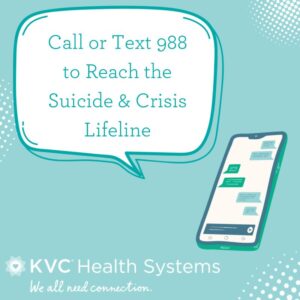Signs of Suicide on Social Media: Risks to Watch for in Children and Teens

As a tool for connection, social media certainly has advantages if used healthily. In fact, a majority of teens feel social media has positively impacted their lives, with 81% of teens saying social media makes them feel more connected to what’s going on in their friends’ lives.
But social media has layers of complexity. It has the power to isolate, distort reality, and diminish self-esteem in its users. And social media can have a strong impact on suicide risk, for young people especially.
It’s Suicide Awareness Month, and it’s a good time to bring attention to the mental health and wellbeing of children and teens. Let’s take a look at the impact of social media, some warning signs of suicide risk on various platforms — and what to do if someone needs help.
The Effects of Social Media on Children and Teens
Technology — and the ever-expanding array of social media platforms — isn’t going anywhere. So it’s up to caregivers to coach children and teens on how to use social media wisely. While social media has permeated seemingly every aspect of our lives, it’s still relatively new. Just think: It’s been only 20 years since the launch of MySpace (which is no longer in business). Instagram has only been around for 13 years, and TikTok has only been available in the United States since late 2018!
As a result, we are only recently beginning to understand the extent of social media’s impact on our lives. Especially for the developing brains of children and teens, the use of social media can severely impact their wellbeing — positively and negatively.
Positive Effects of Social Media
 Screen time is often seen in a negative light; however, the use of social media platforms by children and teens does have its benefits. A study on children 9 and 10 reported a positive link in the use of social media when looking at certain factors like activity level, family closeness, and adequate sleep, but found that general internet usage and video games contributed to more negative effects. Research on children and teens has also found that social media creates opportunities for increased connection to family, friends and new acquaintances with shared interests. It also generates an opportunity for learning about current events, new hobbies and themselves. Lastly, social media gives children and teens freedom of creativity. Meaning, social media can be used as a safe outlet for processing emotions.
Screen time is often seen in a negative light; however, the use of social media platforms by children and teens does have its benefits. A study on children 9 and 10 reported a positive link in the use of social media when looking at certain factors like activity level, family closeness, and adequate sleep, but found that general internet usage and video games contributed to more negative effects. Research on children and teens has also found that social media creates opportunities for increased connection to family, friends and new acquaintances with shared interests. It also generates an opportunity for learning about current events, new hobbies and themselves. Lastly, social media gives children and teens freedom of creativity. Meaning, social media can be used as a safe outlet for processing emotions.
Negative Effects of Social Media
As much as we hope that children and teens will find the positive aspects of social media, there are potential risks to spending time online. These risks include exposure to inappropriate content, oversharing personal information with strangers, comparison of curated lives, overuse and addiction and experiencing cyberbullying. Out of all of these, cyberbullying has the highest link to mental health struggles, including anxiety, depression and suicide. That said, by taking a look into the time spent and content absorbed, there’s a better chance to mitigate negative effects and promote healthy online behaviors.
Research shows that approximately 45% of teens ages 13-17 are consistently online and 97% are using social media platforms during that time. Another study found that children and teens who spend three hours or more on social media are at a heightened risk for developing mental health issues. The way we choose to use social media, and what we are interested in, feeds our thoughts, feelings and mental state. Because of this, social media may more readily expose any underlying mental health conditions already present in children and teens, according to research.
Warnings Signs of Suicide
 As a form of expression, social media can be a window into someone’s thoughts, emotions and mental wellbeing. When sharing these thoughts and experiences, we create a digital footprint that reflects who we are as individuals. This reflection will often leave traces of our mental health. By exploring the signs of suicide to watch for on social media, we can offer support to those in need. Here are some possible suicide warning signs you may notice on social media:
As a form of expression, social media can be a window into someone’s thoughts, emotions and mental wellbeing. When sharing these thoughts and experiences, we create a digital footprint that reflects who we are as individuals. This reflection will often leave traces of our mental health. By exploring the signs of suicide to watch for on social media, we can offer support to those in need. Here are some possible suicide warning signs you may notice on social media:
Drastic Changes in Behavior
Keep an eye out for sudden and significant shifts in online behavior. If a teen who was once active and engaged on social media begins to withdraw or becomes unusually silent, it may be cause for concern. Especially in children and teens, changes in sleep patterns, appetite, or overall mood can also be red flags.
Expressions of Hopelessness
Pay attention to any posts, comments, or messages that express feelings of hopelessness, pain, or a desire to escape. Sometimes, those contemplating suicide may subtly or directly communicate their struggles through social media. This may be their way of seeking help or reaching out to others for support.
Increased Preoccupation with Death
When children and teens repeatedly share or engage with content related to death, self-harm, or suicide, it may indicate that they are struggling with these thoughts. Watch for any alarming shifts in the type of content they post or interact with.
Social Isolation
Loss of interest in activities that normally bring joy is a red flag. Notice if an adolescent starts distancing themselves from friends and family on social media or if they consistently avoid social events or gatherings. Social isolation can be a sign of underlying emotional distress. It’s important to reach out and offer support to those who may be withdrawing from their closest connections.
Giving Away Possessions
If you see someone posting about giving away possessions or making statements about not needing them anymore, it could be a sign that they have lost hope or are contemplating suicide. This should be taken seriously, and immediate action should be taken to ensure their safety.
What to Do When Warning Signs are Noticed
 If you or your child are experiencing an immediate emergency, call 911. You can also call the National Suicide Prevention Lifeline at its new 988 number.
If you or your child are experiencing an immediate emergency, call 911. You can also call the National Suicide Prevention Lifeline at its new 988 number.
It can be an eye-opening experience to find out that a friend, family member or acquaintance is going down a dark path. But if warning signs are noticed, you might just save a life!
Showing concern, offering support and helping with any necessary intervention is often the best way to help if you come across any of these signs on social media. There can be limited time in very serious cases, and it’s crucial to take action to help the person in need.
Action Steps:
- Reach out privately: Have a private conversation with your child or teen to express your concern and offer support. Let them know that you are there to listen without judgment.
- Encourage professional help: Help connect the child or teen to professional assistance from a therapist, counselor, or helpline. The Suicide Lifeline can be reached by dialing 988. You can also engage in professional mental health services, like those at KVC.
- Alert another trusted adult: If you believe a young person is in immediate danger, but you don’t have a strong relationship, reach out to another trusted adult (such as a teacher or school counselor) who can intervene and ensure their safety.
- Report concerning content: Most social media platforms have reporting mechanisms for posts or content that may indicate self-harm or suicidal ideation. Utilize these tools to bring attention to the situation and involve the platform’s support team.
Being aware of the signs of suicide on social media can help us support those who may be struggling with their mental health. With their best interest in mind, we can offer our compassion, understanding, and, if needed, our timely intervention. By allowing social media platforms to connect us, we are in a better place to help someone find the support they need and potentially save a life.
When a child or teen you love is struggling with their mental health, things can feel hopeless. But KVC Nebraska can help. Explore where we serve and what resources we offer.

